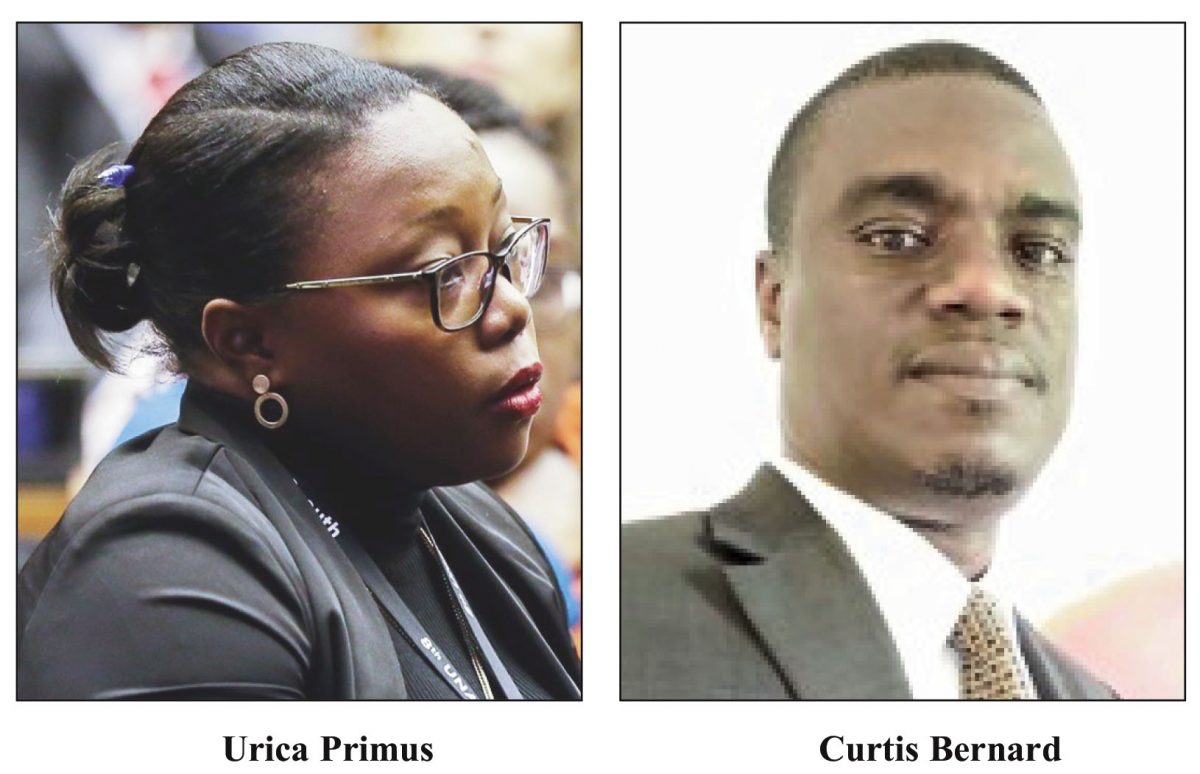Although mining remains an important pillar of Guyana’s economy, it also continues to be responsible for the majority of deforestation and river contamination in the country, according to industry stakeholders, who say the use of technology is key to reversing the environmental damage.
In observance of Earth Month, the United States Embassy in Guyana hosted a series of virtual programmes to discuss environmental issues in Guyana, including one focused on sustainable mining that saw inputs from President of the Guyana Women Miners Organisation (GWMO) Urica Primus, Senior Environmental Officer with the Guyana Geology and Mines Commission (GGMC) Darcy Walrond and Senior Technical Director at Conservation International (CI) Guyana Curtis Bernard.
During the discussion, it was highlighted that much of the forest loss within Guyana is caused by artisanal and small-scale miners, who respond quickly to increases in international gold prices. They often leave extensive soil erosion and rivers and streams contaminated with mercury, which are among the major issues in Guyana’s mining industry,
According to Bernard, deforestation is one of the major environmental impacts in Guyana and this is caused by small and medium-scale miners, particularly in gold mining, who clear the land to access the minerals in the ground. In many cases, mercury is used to separate the gold that is mixed in soil and sediments, forming an amalgam. The mercury is then burned over an open flame to retrieve the gold and improper handling of the chemical has contributed to health issues in miners and nearby communities.
With these challenges in mind, Bernard revealed CI has launched a project called the Responsible Mining Initiative in collaboration with several government agencies and Non-Governmental Organisations (NGOs) and also the National Toshaos Council. He noted that the organisation’s decision to focus on mining issues is largely due to the industry’s economic importance to Guyana and the adverse impacts irresponsible mining practices have had on the environment
Practicable solution
He stated that the primary goal of the project is to find a practicable solution to limit deforestation and the use of mercury to recover gold. He revealed that from 2009 to 2012, when there was a sharp increase in gold prices internationally, CI observed that the deforestation also increased and so part of the project is to address such inefficiencies. “We recognise that mining is important and mercury and deforestation are the major impacts,” he said.
Adding to this, Primus revealed that whenever there is an increase in gold prices there is also an increase in the number of miners, some of whom may not be fully educated on mining practices and regulations, which contributes to the environmental and health challenges that come hand-in-hand with the mining industry. She noted that sustainable mining in its entirety remains a major challenge, especially given the limited use of technology in the mining sector but noted that collaborations with NGO’s and government agencies have provided a platform for these issues to be addressed.
Walrond agreed, stating that the government has been pushing for more inclusive interactions with the various agencies to make mining more sustainable in Guyana.
He revealed that GGMC has an active programme to demonstrate that the restoration of forests is possible. He detailed that they have been trying to restore the forest as close as possible to how it was before it was mined. He noted that they were able to convince miners to give up their claims despite the land potentially not being exhausted of its minerals and have done live demonstrations of rehabilitation of forests in those area so that the miners can see that the areas can be restored.
He noted, however, that this brings to the forefront the importance of gold recovery because, once feasible, miners will continue to mine in an area even if there is a slight possibility that there is no gold.
“We have done extensive work when it comes to mine site rehabilitation or reclamation. It is something we put on the forefront, especially in the Environmental Division right now where we are trying to get miners to utilise their area as much as possible and recover as much and this is why it is important to come up with different types of technology to include recovery so that when they are finished we can reclaim,” he said.
Primus and Bernard expressed agreement with Walrond’s statement, saying that if there is an increase in mineral recovery through the use of technology, then there will be an increase in reforestation and that recovery is key to addressing the challenges in the mining industry,
However, Bernard stated that proper exploration is vital to addressing the numerous challenges in the mining industry. “We first need to figure out where the gold actually is and then clear that area; remove the gold safely with technology that we can use to recover most of the gold from the ore and then we can actually reforest that area. The clearing is smaller…. Getting exploration right, the right technology to improve the rate of recovery is some of the biggest inputs that we can do right now to ensure that land can be easily and fully recovered,” he said.
Walrond made similar statements noting that proper exploration will be vital, especially for small and medium-scale mining where there is not an extensive amount of exploration done. He subsequently revealed that GGMC is trying to push more initiatives that will allow for more detailed exploration so that miners can limit the amount of forest needed to be cleared for mining. Once this is achieved, miners should have a better understanding of the mineral available and would be able to design a better mining plan, he said.
Walrond added that GGMC has strong regulations in place to combat the adverse effects of mining, especially where there are nearby communities, but effectively monitoring mining activities is still an issue.






